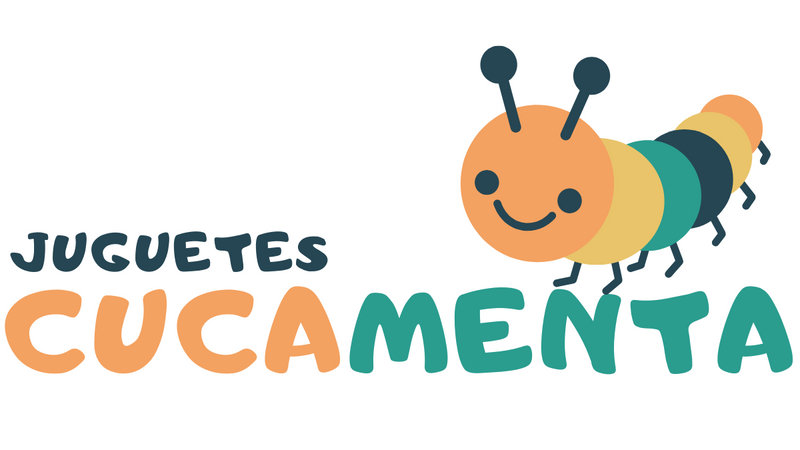Using a less poetic, but very accurate, definition, the Aquae Foundation describes imagination as “the ability to produce and simulate new objects, sensations and ideas in the mind without any immediate input from the senses.”
We all carry it within us, and stimulating it in children is possible through very diverse means. Thanks to it, children go from being observers or receivers to creators.
Imagination helps them develop abstract thinking, be more critical, have greater emotional and psychological well-being, expand their world, laugh, combat anxiety and release tension. How to get your child to inhabit and invent other worlds, alternative realities and parallel universes, thanks to the unique superpower of their imagination?
These are some proposals.
7 keys to enhance children's imagination

- Practice creative writing with them: Put papers in a hat and take out two words as a creative binomial to invent a story, use resources such as those provided by websites such as Orientación Andújar or tell stories in several hands using the corpsetechnique . Exquisite is a great way to degrease the imagination.
- The magical power of stories : Telling them stories from a very young age allows them to expand the mind, strengthen the muscle of creativity, generate mental images from the words and expand knowledge, vocabulary and understanding. Classic stories, fables and popular legends will be very useful to you. It is also important to tell him invented stories, full of twists and surprises, and in which he can contribute his ideas for the beginning, the twists or the end.
- Give them time to “get bored” and play whatever they want : Unstructured play time, that which does not have specific rules or instructions, is vital for the body and mind, so much so that it is said that it should take twice as long. of play than structured activities. "Boredom provides children with an inner tranquility that helps imagination and self-knowledge. Creative processes can stimulate interests that will remain with the child for a lifetime," explains Melbourne Child Psychology in an article .
- Full crafts : Drawing, painting, using plasticine, cutting out or modeling clay are some essential activities to stimulate creativity in children , and incidentally, work on other aspects such as fine motor skills, concentration or spatial vision. You can help yourself with YouTube channels for crafts like the ones we proposed in this article .
- Encourage active, open-ended hobbies instead of passive ones: It's great for kids to enjoy cartoons or watch a movie, but they shouldn't monopolize leisure time. When children watch TV, they are assimilating other people's images and ideas instead of creating their own, and the imagination, like any muscle, must be exercised so as not to atrophy. Reading aloud and encouraging free play with open materials such as building blocks, water, sand, water, mud or play dough encourages experimentation, creative freedom and problem solving.
- Let them dress up : Dressing up - and not only with conventional clothing and accessories, but with any object, fabric or garment they find at home, from a tablecloth to an old hat or an apron turned into a cape - allows children to give wings to become other characters, interact with each other and invent their own stories. Combining costumes and crafts will populate your house with dinosaurs, rockets, pharaohs, warriors, goblins, aliens or monsters.
- Nature has the key : Contact with nature and green spaces improves health, attention span, motor and cognitive development, stimulation of the senses, balance, coordination, agility, physical fitness and empathy with other living beings, but also imagination. Open spaces, new smells, fascinating animals and plants, the changes of the seasons or natural phenomena will inspire them and help them feel more connected to the world.
There are many more ways to stimulate children's imagination : cooking your children, letting them be storytellers for a day, inventing jokes, a puppet show or a small theater at home, doing a mask or makeup workshop, practicing mime and sounds, composing a song or covering songs, learning magic tricks or pretending to be well-known historical figures.
Toys to let the imagination fly

- Surprise Monkey Puppet : Ideal for telling stories, putting on a little theater or letting the little ones invent their own stories. Recommended for ages 3 or 4 and up, you can tell thousands of stories about Jack the mischievous monkey who loves his hiding place. Ideal for its friendliness and fun format.
- Surprise Penguin Puppet : Like the previous puppet, it is a fabulous way to tell stories and save wonderful memories. It is a fun and educational toy that enhances concentration, understanding and language.
- Mimicry : Take advantage of this fun game for little ones to practice miming and learn to describe situations, characters or stories exclusively through gestures, gestures and body movements, without words. Includes cards to draw yourself, making it ideal for encouraging imagination.


0 comments